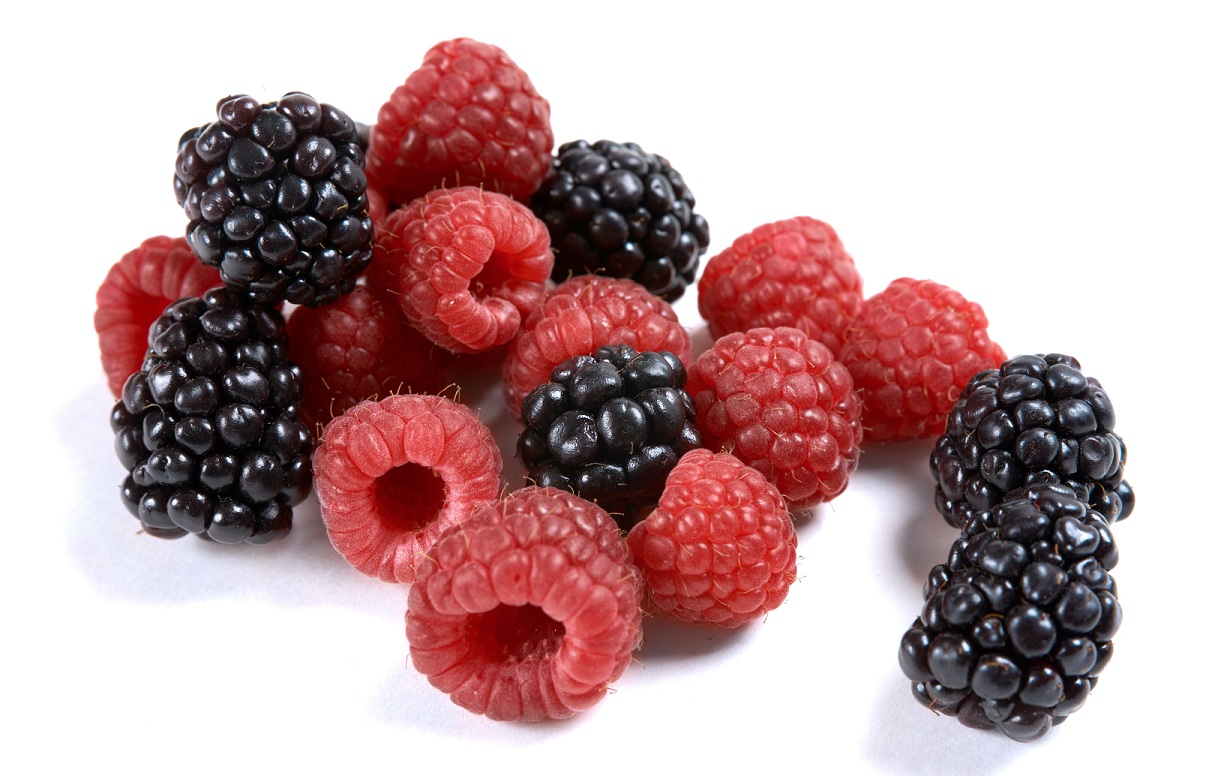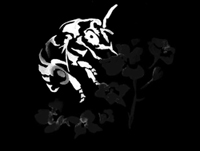Raspberries & Blackberries (Rubus spp.)

Mating & Breeding System: Many species of Rubus berries are cultivated or collected in the wild, such as red raspberry (Rubus idaeus, R. strigosus, R. occidentalis) and blackberry (R. fruticosus). The genus is a large one, and there are many wild species and hybrids, many of which are self-infertile or have male or female organs in separate flowers (dioecious). As a result, these types require cross-pollination by insects. Most cultivated varieties are hermaphroditic and self-fertile.
The flowers of Rubus spp are actually groups of small flowers attached to a receptacle which open in sequential rings over a period of a few days. Each “flower” has numerous stamens and styles, each attached to a carpel containing two ovules. Because the small individual flowers on each receptacle open over an extended period, pollinators must visit self-incompatible plants several times to ensure that enough individual flowers are pollinated for a marketable fruit is to develop.
Pollination, Quality & Yield: Some cultivated varieties show no difference (or even a negative effect) from cross-pollination compared to self-pollination. However, most evidence suggests that insect pollinators are beneficial. Flowers set more fruit, there are more seeds per fruit, and fruits can be better formed and heavier, all of which lead to higher yield. Cross-pollinated fruit is more likely to develop to maturity. Research has found that 5-6 honey bee visits totalling about 150 seconds was enough to pollinate raspberry. Intensive activity of pollinators may be an issue, particularly with bumble bees; foraging activity can become aggressive, damaging the flowers and causing deformities in the resulting fruit.
Pollination Recommendations: Cultivated species of Rubus produce abundant nectar and are attractive to a wide range of insects.
If using honey bees, 1-2.5 or more colonies per hectare of honey bees are recommended.
Bumble bees can also be effective pollinators, perhaps even superior to honey bees in some cases. Studies with Rubus idaeus in Scotland found that bumble bees outperformed honey bees, but others have shown that the benefit from commercial bumble bee colonies is small when wild bee populations are adequate. The potential for use of bumble bees, either wild or managed, for pollination, should be investigated in Ontario.
The solitary mason bee may also be an effective pollinator, as a study in western North America with the native bee Osmia aglaia has found.
References
Cane, J.H. 2005. Pollination potential of the bee Osmia aglaia for cultivated red raspberries and blackberries (Rubus: Rosaceae). HortScience 40:1705-1708.
De Oliveira, D., Gingras, J., & Chagnon, M. 1984. Honey bee visits and pollination of red raspberries. Acta Horticulturae 288:415-419.
Hardy, M.B. 1931. Self and cross fertility of red raspberries. Proceedings of the American Society of Horticultural Science 28:118-121.
Kevan, P.G. 1988. Pollination, crops and bees. OMAFRA publication 72.
Scott-Dupree, C.D., Winston, M., Hergert, G., Jay, S.C., Nelson, D., Gates, J., Termeer, B., & Otis, G. 1995. A guide to managing bees for crop pollination. Canadian Association of Professional Apiculturists, Aylesford NS.
Shanks, C.H. 1969. Pollination of raspberries by honeybees. Journal of Apicultural Research 8:19-21.
Whitney, G.G. 1984. The reproductive biology of raspberries and plant-pollinator community structure. American Journal of Botany 71:887-894.
Willmer, P.G., Bataw, A.A.M., & Hughes, J.P. 1994. The superiority of bumblebees to honeybees as pollinators: insect visits to raspberry flowers. Ecological Entomology 19:271-284.
